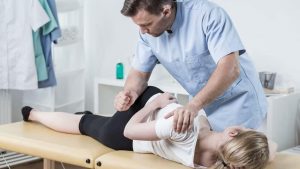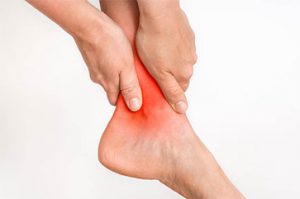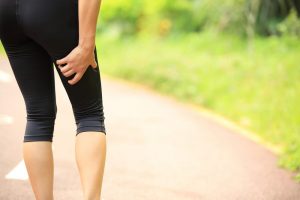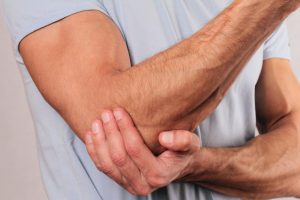Here at Knoxville Spine and Sports, we take great pride in providing the finest sports chiropractic and wellness care to all types of athletes and active individuals throughout the Knoxville TN area. Specializing in Sports Injury Treatment in Knoxville, Dr. Bert Solomon and his staff assess and evaluate all patients on each visit in six different areas to customize a care plan tailored to your specific needs. We treat a wide variety of injuries related to sports, including:

Rehab Tips: There are several things you can do to stabilize your back after a bout of pain hinders you. If it feels serious, see the doctor, then when you’re able, get back to exercising by working your glutes, hamstrings, and core. Spinal mobility exercises like cat/camel and open book, planks, and proper technique and position in various activities are all necessary to avoid further back problems. Many patients also benefit from sports physical therapy Knoxville, which focuses on guided exercises to restore strength and mobility.
Causes: An ankle sprain refers to the injury to the soft tissues, usually the ligaments, of the ankle when it turns in during physical activity. As you know, the ankle sprain is that familiar sports injury that usually results from twisting your ankle – may be from coming down from a jump incorrectly, planting your foot in the wrong spot during a cut, or just from losing your footing while running. There’s often that moment when you wonder whether you just harmlessly rolled your ankle or truly sprained it. The prolonged pain as you keep moving gives you the answer you weren’t looking for.
Rehab Tips: The RICE method – rest, ice, compression, and elevation – is effective in dealing with ankle sprains. Once pain reduces, start back riding on a stationary bike, then move on to static balancing exercises while also strengthening the quads, hamstrings, and glutes to increase ankle stability. He suggests light plyometrics before making a return to regular activity. Seeking sports physical therapy Knoxville can also help prevent recurring injuries and improve overall ankle strength.

Causes: A regimen that includes a lot of running and/or sprinting is often the culprit. Pair that with other factors like having naturally flat feet or using poor footwear that doesn’t provide enough support and you have a recipe for disaster. Other factors can include obesity, trauma or simply being on your feet a lot – hence the reason it was once called “policeman’s heel.”
Rehab Tips: Unfortunately, plantar fasciitis won’t go away overnight. It’s a gradual process and you have to be patient with it. Dr. Bert suggests rolling the arch of your foot over a golf ball, frozen water bottle, or rolling pin for five minutes at a time to stretch out the strained tendon. Wearing a splint at night from a podiatrist, changing sneakers every two months, wearing thicker socks, and stretching your Achilles should also help get you back to being comfortable on your feet.
The ACL is a ligament that runs behind the knee between the femur (thighbone) and tibia (shin bone). Strains can act as a wake‐up call to strengthen your legs once you get your body back to pre‐injury condition.
Causes: Most ACL strains can be attributed to sudden deceleration, like trying to stop on a dime and cut in another direction, or from hyperextension of the knee or pivoting in place. Several sports regularly bring sources of stress like this down on the ACL, so if you’re not quite prepared for the fitness it takes to play a sport like basketball or soccer, you could put yourself at risk by throwing yourself out there.
Rehab Tips: Your top priority needs to be strengthening your hamstrings. Building up your quads and glutes is also important. Active recovery should start with “heel slides with a weight, straight leg raises in various positions… sidestepping with a resistance band and [various] hamstring exercises.”
Sports Injury Treatment in Knoxville at our clinic ensures personalized care plans for ACL strains, focusing on strengthening and recovery.
Causes: Quad strains can come about from a variety of factors – any muscle imbalance between the hips down to the toes can impact the quadriceps muscle. One common cause is simple overuse – pushing the quad further than you usually do on any given day, but there are several other ways to come down with it. Putting stress on the muscle when it’s not ready (like sprinting without doing a proper warm‐up) is another common cause while overstretching and trauma can be factors as well. The extent of symptoms runs the gamut – many quad strains can produce mild discomfort, but some cause severe pain that will leave you in need of crutches.
Rehab Tips: There are several things you can do to stabilize your back after a bout of pain hinders you. If it feels serious, see the doctor, then when you’re able, get back to exercising by working your glutes, hamstrings, and core. Spinal mobility exercises like cat/camel and open book, planks, and proper technique and position in various activities are all necessary to avoid further back problems. Many patients also benefit from sports physical therapy Knoxville, which focuses on guided exercises to restore strength and mobility.

Rehab Tips: A big part of recovery from hamstring injuries is making sure to do exercises that rebuild muscle instead of scar tissue, effectively preventing re‐injury. The active rehabilitation process starts with isometric exercises that contract the muscles but don’t move the joints, then moves onto exercise with light weights before starting with more strenuous exercise to steadily return to pre‐injury health, and hopefully with some extra strength to prevent future problems.
Hip bursitis causes pain over the outside of the upper thigh. The condition refers to a bursa, which is a fluid-filled sac that makes it possible for efficient motion between two uneven surfaces. When the bursal sac over the outside of the hip becomes inflamed, it can’t do its job effectively, making it painful to move.
Causes: Hip bursitis is common in older individuals, but it also afflicts very active people on the younger side. Although you can get it from a hard impact to the hip, in many cases, it’s yet another example of an overuse injury, coming about from activities like running, cycling, or walking long distances.
Rehab Tips: Improving strength and coordination in the buttock and hip muscles enables the femur to move in the socket smoothly and can help reduce friction on the bursa.

Rehab Tips: First and foremost, start with rest. It’s important to let the muscles and tendons heal on their own, and exercises to get your arm back in working form involve strengthening the opposing muscles by doing a series of different forearm workout routines.
430 Montbrook Lane Suite 203
Knoxville, TN
37919
Phone: 865-337-5574
Monday
7am-12pm & 1pm-6pm
Tuesday
7am-12pm & 1pm-4pm
Wednesday
7am-1pm
Thursday
7am-12pm & 1pm-6pm
Friday
7am-12pm & 1pm-4pm
Saturday & Sunday
Closed